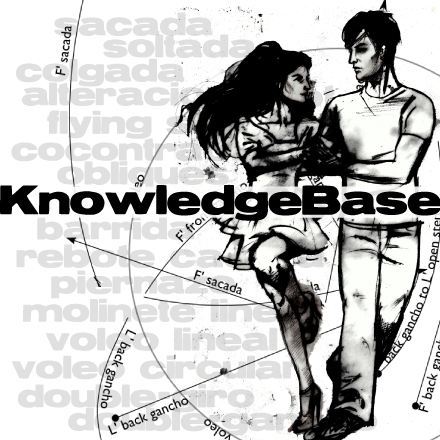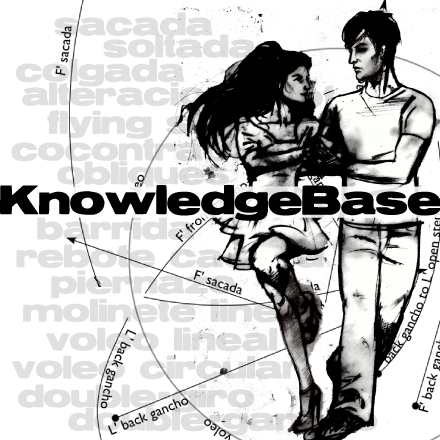Changing feet in place is one of the hardest moves, because it’s so small and feels subtle. The slightest misplaced tension in the embrace can block the information.
Variations
There are four distinct possibilities for change of foot:
- Pace-system, both partners change
- Trot-system, both partners change
- The Revel is marked to change foot alone
- The Mark changes foot alone
In any of those changes, it’s possible to change with the feet parallel, or crossed. (These are crosses with no projection.)
Technique
The challenge of the mark for change of foot is to be clear, but small. To do this, recognize that this mark is happening inside the geography of the embrace. If the intention goes beyond the embrace, you will mark a projection.
It is a lateral intention, but it’s very small. That means it involves the oblique muscles, but without the arm abduction that would accompany a lateral projection for side step or ocho.
With the supraspinatus relaxed and no arm abduction, redirect where your arc is pointing to meet the revel’s to the desired position (that will be a small spinal rotation, using your obliques to change the aim of the arc 10-15 degrees. When you re-aim, she moves her arc to meet yours.
If the mark changes foot alone, the new foot takes over the base of the arch pointing exactly where your arch was pointing before, keeping the Revel on her current foot.
Any tension in shoulders or wrists will prevent the Revel from believing that she should put weight on the new foot, because this tension communicates stasis or an up direction. If the move doesn’t work, reboot the embrace: external rotation of shoulders + gentle contraction of triceps.
A technical variation is when making repeated side steps in the same direction the mark may use a vertical circle, which involves up. But note that it’s still crucial that when it’s time to put her weight onto the new foot, he releases all tension going up. This variation has a particular dynamic and is very slow; it is not useful as a general mark for change of foot.












